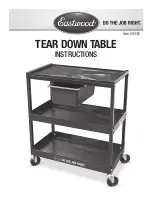
Using Your LaCie Drive
LaCie mini
COMPANION HARD DRIVE
user manual | page 13
3. Using Your LaCie Drive
Formatting a disk consists of the following: the operating system erases all of
the bookkeeping information on the disk, tests the disk to make sure that all of
the sectors are reliable, marks bad sectors (i.e., those that are scratched) and
creates internal address tables that it later uses to locate information.
As you format the drive, you will have the opportunity to divide the hard drive
into sections, called partitions. A partition is a section of the hard drive’s
storage capacity that is created to contain files and data.
Once formatted, the actual available storage capacity varies, depending on
operating environment, and is generally about 10% less than the non-
formatted capacity.
File System Formats
There are three different file system formats that are predominately found in
Mac and Windows environments:
•Mac OS Extended (HFS+) - for Mac OS 9.x and Mac OS 10.x
•NTFS - for Windows 2000 and XP
•FAT 32 - for Windows Me and legacy operating systems
Tech Note:
Windows Users!
This
LaCie Hard Drive is formatted for
the Mac operating system, and you will
need to re-format the drive in order for it
to appear and operate under the
Windows operating system.
Mac Users
• If you will be using the drive in a strictly Mac OS
environment, leave the drive formatted as one large Mac
OS Extended volume.
• If you want to be able to install multiple Mac operating
systems on the LaCie Drive, partition the drive into
multiple Mac OS Extended volumes.
Windows Users
• If you will be using this drive between Windows
98SE, Me, 2000 and/or XP environments, it is
recommended that you create two partitions: one that is
a 32GB FAT 32 (MS-DOS File System) volume, and the
other as a large NTFS volume.
• If you will be using the drive in a strictly Win
2000/XP environment, create one large NTFS volume.
Important Note:
If you will be
using this drive between Mac and
Windows operating environments, you can
create two partitions: one 32GB FAT 32
volume, and one large Mac OS Extended
volume. There are certain limitations to this
configuration, though; to achieve the best
performance and reliability, it is
recommended that you utilize a third-party
utility, such as Mediafour’s MacDrive,
which allows Windows computers to read
and write files on a volume formatted for
the Mac.














































